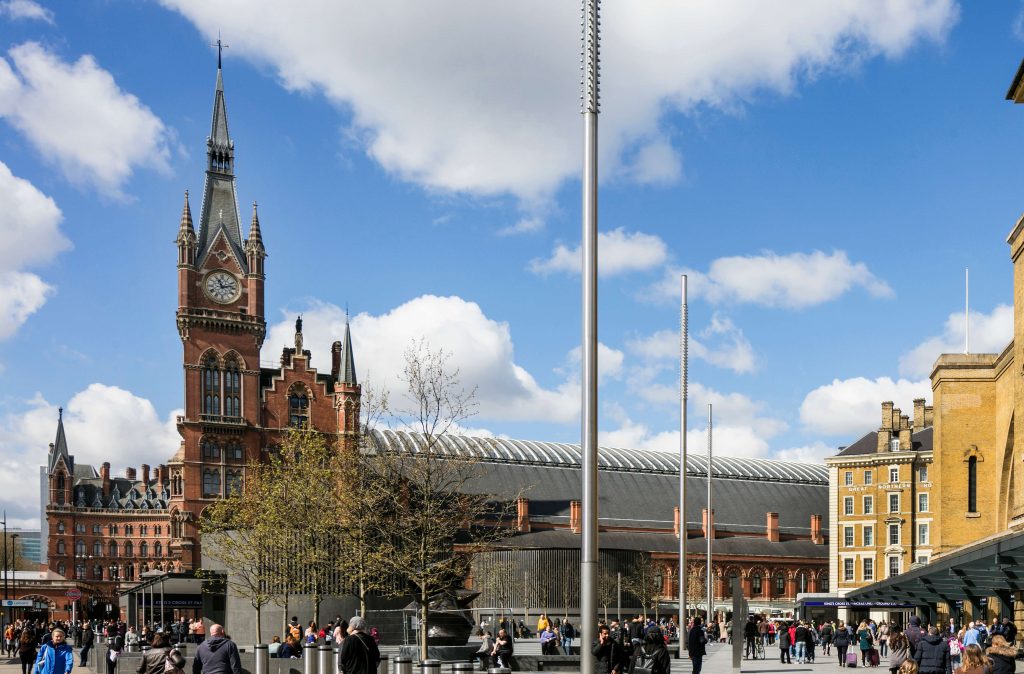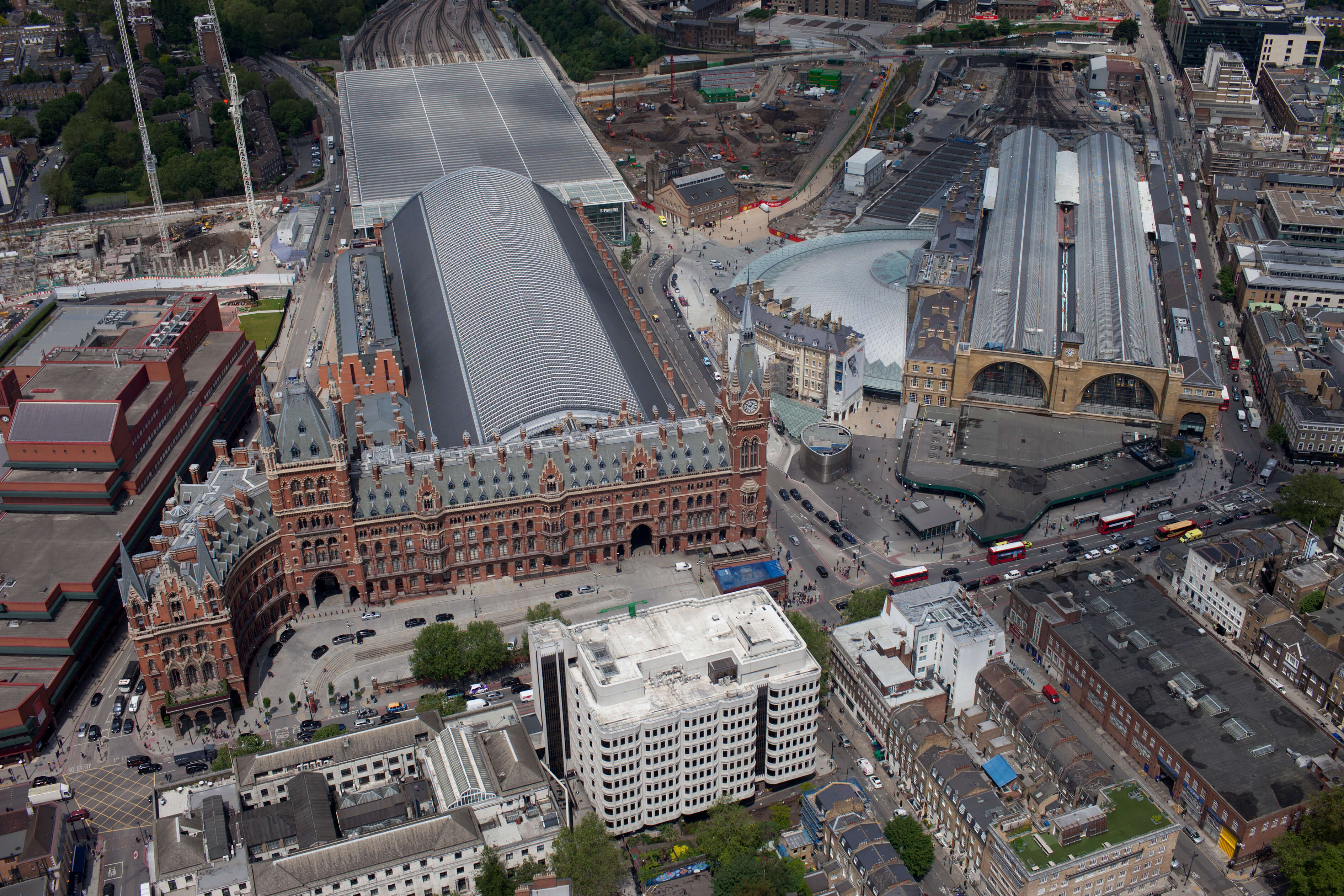London St Pancras International – the Victorian Gothic railway icon-turned gateway to Europe – is among the famous structures to appear in the new series, The Architecture the Railways Built.
Step into this stunning piece of history on Yesterday at 8pm today (2 June) as presenter Tim Dunn explores the architecture across Britain’s railway.
Owned by HS1 and managed by Network Rail, today St Pancras is a crucial London interchange providing a regional, intercity, continental and high-speed railway.
A new grand terminus for London
St Pancras’s mid-19th century roots lie in the need for the Midland Railway to better compete for goods and passenger traffic in the South of England.
The station was designed and constructed in two parts; the train shed and the hotel frontage. William Henry Barlow, the Midland Railway’s consultant engineer, designed the route and station layout, including a single-span arched train shed constructed of iron and glass. At 243ft by 110ft high at its apex, it was at the time the largest ironwork structure of its kind.
Victorian gothic
In 1865, a competition was held to design the front façade of the station including a new hotel. George Gilbert Scott, the most celebrated gothic architect of his day, won the competition even though his design was larger than the rules allowed.
The hotel’s construction began in 1868 but the economic downturn of the late 1860s meant the hotel, named the Midland Grand, only completed in 1876. Striking and self-confident, the station and hotel completely dominated its Great Northern neighbours.

The Architecture the Railways Built – Ffestiniog Railway
The Architecture the Railways Built – Ribblehead Viaduct
The station’s decline
In 1923, St Pancras was transferred to the management of the London Midland & Scottish Railway; the LMS focused its activities on Euston, and so began the decline of St Pancras over the next 60 years.
In 1935, the Midland Grand closed as a hotel due to falling bookings and profit, blamed on the lack of en-suite bathrooms. Instead it became office accommodation for railway staff and renamed St Pancras Chambers.
During WWII, the station played an important role for troops departing for war and children evacuating London. Fortunately, St Pancras only suffered superficial damage during the Blitz and was quickly up and running again.
The decline continued throughout the 1950s and 1960s, and British Railways tried repeatedly to close and demolish the station. Writer and broadcaster John Betjeman spearheaded a campaign to save the station and hotel, and in November 1967 succeeded in getting the buildings declared Grade 1 listed days before demolition.
Although the buildings were saved, their decline continued. The hotel building was mothballed in 1985 and the train shed roof fell into a state of serious disrepair.
Destination station
St Pancras enjoyed a revival in the 1990s. The Channel Tunnel opened in May 1994 but high-speed trains could only reach their maximum speeds on the French side of the Channel.
In 1996, the Government passed the Channel Tunnel Rail Link Act authorising the construction of a high-speed line from the tunnel to a redeveloped St Pancras International.
Barlow’s original train shed roof was restored to its Victorian glory in consultation with English Heritage and with painstaking reference to original detail. It featured 18,000 panes of self-cleaning glass, 300,000 Welsh slates and iron girders stripped and repainted in their original pale blue.
An additional train shed to the rear of Barlow’s original designed by architecture firm Foster & Partners enabled extended platforms to accommodate Eurostar trains.
The new St Pancras International station officially opened on in November 2007 with Eurostar and East Midland services, and with Thameslink services joining that December. At the end of 2009 high-speed domestic services began between St Pancras and Kent.
Read more:
The history of London Waterloo
Proud to support The Railway Heritage Trust
People and the railway: The Railway Heritage Trust
Film: The railway at war – 1914-1918
Our historic railway: seven discoveries
Film: Discover the Network Rail archive
Incredible Stephenson railway history rediscovered




